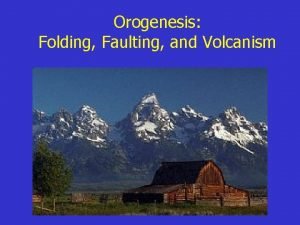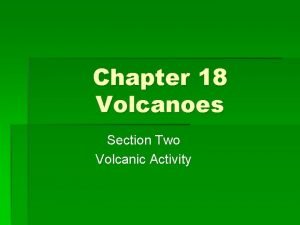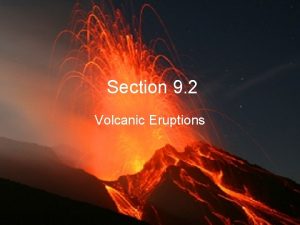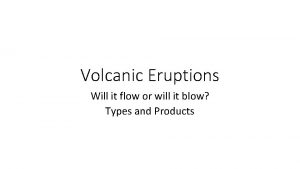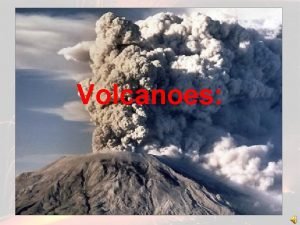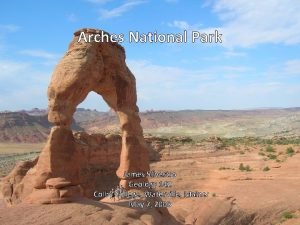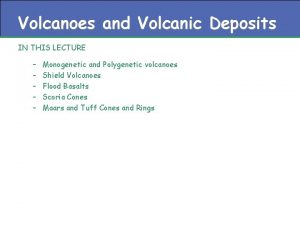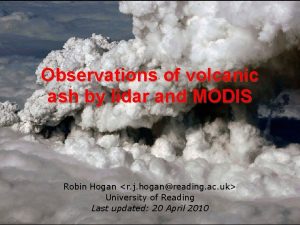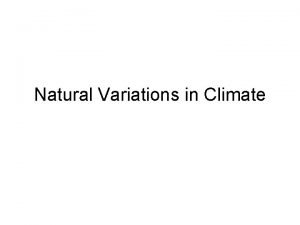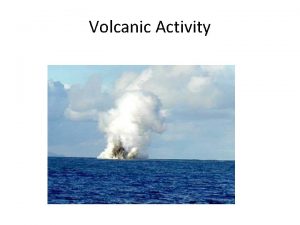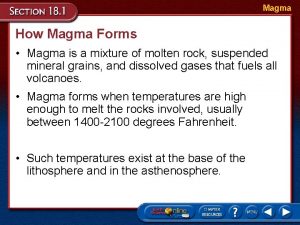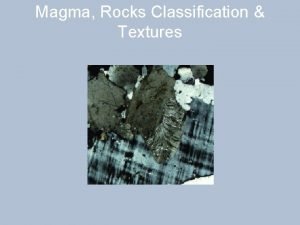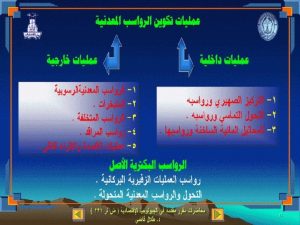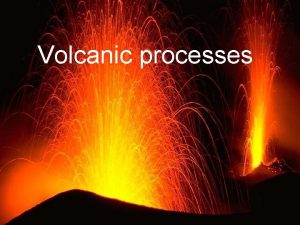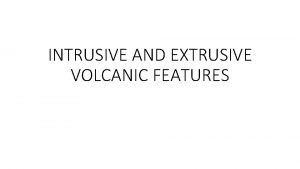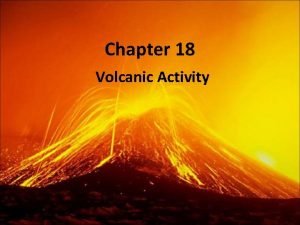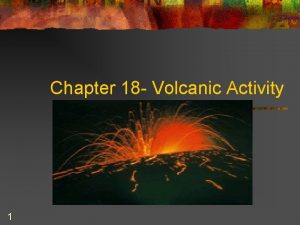Ch 18 Volcanic Activity u Magma is a









- Slides: 9

Ch. 18 – Volcanic Activity u. Magma is a mixture of molten rock, suspended mineral grains, and dissolved gases deep beneath Earth’s surface. –These rocks start to melt a temperatures between 800°C and 1200°C. –This occurs and the base of the lithosphere and the asthenosphere. u. The pressure and amount of water in the rocks pores also affect the temperature a which magma forms.

Types of Magma u 1. Basaltic Magma – made mostly of basalt. – Mostly found in the Hawaiian Islands u 2. Andesitic Magma – made mostly of andesite. – Mt. St. Helens and Tamobra in Indonesia u 3. Rhyolitic Magma – made mostly of granite. – Dormant volcanoes in Yellowstone National Park. u Active Volcanoes Pg. 473 (fig. 18 -2)

Magma Composition u TABLE 18 -1 (Pg. 474) u Viscosity – the resistance to flow – The hotter the magma or lave the lower the viscosity. Why? – It moves and flows easier when it’s hot. u Rhyolitic magma has the highest viscosity and highest explosiveness. – Found in continental crust u Basaltic magma has the lowest viscosity and lowest explosiveness. – Found in both oceanic and continental crust.

Intrusive Activity Magma is less dense than the rock that surrounds it, so it will eventually rise the Earth’s surface. u As the magma cools forms under the Earth’s surface plutons can form. These are igneous rock bodies. u Plutons are classified by their size, shape, and relationship to surrounding rocks. u The largest plutons are called batholiths. They cover 100 km 2 and take millions of years to form. u – Most batholiths in N. America are composed mostly of granite. – Pg. 477 – Fig. 18 -5

u Stocks are smaller in size and irregular shaped plutons. u Laccoliths are smaller yet and have mushroom-shaped plutons with a round top and flat bottom. u Sills are plutons that form when magma intrudes parallel to layers of rock. u Dikes are plutons that cut across preexisting rocks. u Most plutons form from mountain building processes. – When the continental crust is forced down into the lower mantle it melts and eventually cools as batholiths.

u What Volcanoes are some characteristics of a volcano? u A vent is the area in a volcano were lava can flow to the surface of a volcano. u The crater is the bowl-shaped depression near the top of the volcano. u Large craters are called calderas. – Depression that forms when the top or side of a volcano collapses into the magma chamber. – Ex. Crater Lake (pg. 481) u Landscape features (exterior) include: vents, craters, and calderas.

Types of Volcanoes u Shield Volcanoes are mountains with broad gentle slopping sides and a nearly circular base. – Forms from several layers of basaltic lava – They have low viscosity and low explosions. u Cinder-Cone Volcanoes form when material is ejected high into the air and falls back to the Earth and piles up around the vent. – Steep slopes & more explosiveness than shield volcanoes. – Forms as tephra ejected high into the air fall back to the Earth and pile around the vent.

u Composite Volcanoes form when layers of volcanic fragments alternate with lava. – Larger than cinder-cone volcanoes. – Violently explosive in nature. – Mt. St. Helens and Mt. Rainer – Made from layers of tephra and lava. – Largest of the volcanoes. u Tephra are rock fragments that are thrown into the air during the eruption. – Dust is the smallest fragments – Ash are the larger fragments, but still less than 2 mm in size. u Pyroclastic flow is rapidly moving volcanic material and may contain hot, poisonous gases.

u Volcanoes can occur in convergent boundaries (come together) and divergent boundaries (spread apart). – Fig. 18 -16 (pg. 485) – Mainly convergent boundaries. u Hot spots are regions away from plate boundaries were volcanoes form. – Hawaiian Islands have several hot spot volcanoes. u Volcanism that occurs under water along mid-ocean ridges are rift volcanism u Volcanoes are proof that the Earth is dynamic planet.
